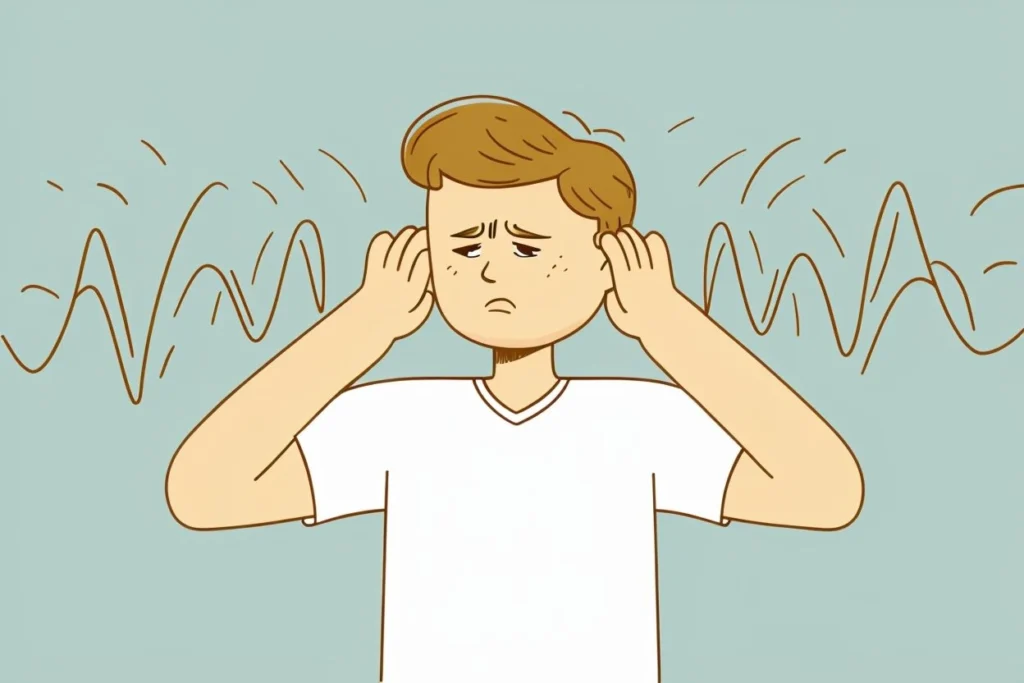
Misophonia is more than a dislike of certain sounds—it’s a complex sensory condition that can trigger intense emotional and physical reactions. For those living with it, everyday noises like chewing or pen-clicking become sources of distress. Let’s explore what misophonia is, its causes, and how it affects daily life and relationships. Additionally, we’ll provide actionable strategies to help you or your loved ones manage this condition effectively.
What Is Misophonia?
The term “misophonia” translates to “hatred of sound,” but it’s far from just disliking annoying noises. Individuals with misophonia experience involuntary, often intense reactions to specific sounds, commonly referred to as “trigger sounds.” These triggers often include:
- Chewing or crunching
- Pen clicking or tapping
- Breathing or sniffling
Unlike general irritations, these sounds provoke a heightened emotional and physical response, making even routine activities a challenge.
Symptoms of Misophonia
Misophonia manifests in emotional, physical, and behavioral ways, including:
- Emotional Reactions
- Irritation, anger, or disgust at specific sounds.
- Anxiety or panic attacks in anticipation of trigger sounds.
- Physical Responses
- Increased heart rate, sweating, or muscle tension.
- Feeling “on edge” when exposed to triggering noises.
- Behavioral Changes
- Avoiding specific places or situations to escape trigger sounds.
- Using headphones or earplugs excessively to block out noises.
These symptoms often make people feel isolated or misunderstood, amplifying the impact of the condition.
Understanding Misophonia Through Real-Life Experiences
Consider Emma, a 29-year-old graphic designer. She finds her coworker’s typing intolerable, causing her to wear noise-canceling headphones daily. Despite her efforts, she struggles to focus, which affects her work performance and relationships at the office.
Such real-life scenarios highlight how misophonia interferes with everyday functioning, reinforcing the need for coping strategies.
What Causes Misophonia?
Misophonia’s exact causes remain under research, but experts believe it arises from a combination of neurological and psychological factors:
- Neurological Sensitivity
- Overactivity in the brain’s auditory and emotional centers may amplify sound perception.
- Learned Associations
- Negative experiences with specific sounds during childhood could condition these reactions.
- Genetics
- A family history of sensory processing issues may predispose individuals to misophonia.
Understanding these factors can help guide treatment approaches and build awareness.
How Misophonia Impacts Daily Life and Relationships
Misophonia doesn’t just affect the individual; it often strains their professional and personal environments.
1. Workplace Challenges
Office sounds like typing, coughing, or phone vibrations can disrupt focus and productivity. Employees with misophonia may feel overstressed or singled out due to their need for accommodations.
2. Relationship Strains
Loved ones may struggle to understand the severity of reactions, leading to conflicts. Misophonia can create tension in family dinners, shared spaces, or romantic relationships.
3. Social Isolation
To avoid uncomfortable encounters, individuals may withdraw from social activities, missing out on meaningful connections and experiences.
Coping Strategies for Misophonia
While there’s no definitive cure, several strategies can help manage misophonia effectively:
1. Noise-Canceling Devices
Using noise-canceling headphones or earplugs reduces exposure to trigger sounds, especially in shared environments.
2. Mindfulness Techniques
Practices like deep breathing, yoga, or meditation help regulate emotional responses to triggering noises. Try apps like Calm or Headspace for guided mindfulness exercises.
3. Sound Therapy
Audiologists recommend white noise machines or other sound-masking devices like sound generators to reduce the prominence of trigger sounds.
4. Cognitive Behavioral Therapy (CBT)
CBT sessions with a licensed therapist can help reframe negative associations and develop healthier coping mechanisms.
5. Open Communication
Educate family, friends, and coworkers about misophonia. Sharing resources like The Misophonia Survival Guide can foster empathy and collaboration.
6. Balanced Lifestyle
Regular exercise, a healthy diet, and quality sleep improve overall stress tolerance, making it easier to manage triggers. Consider using fitness trackers or sleep aids for added support.
Resources for Support
If misophonia affects you or someone close, explore these tools for help:
- Books:
- Dare: The New Way to End Anxiety by Barry McDonagh
- The Misophonia Manual by Jennifer Jo Brout
- Support Groups:
- Online communities like Reddit’s r/misophonia provide shared experiences and advice.
- Professional Help:
- Look for audiologists or therapists experienced in sensory processing disorders.
Conclusion: Finding Strength Through Awareness and Action
Misophonia is a challenging condition, but understanding its triggers and impacts can pave the way to effective management. By using tools like noise-canceling headphones, practicing mindfulness, and fostering open communication, individuals can reclaim control over their lives.
Remember, you’re not alone. With the right strategies and support, you can navigate the complexities of misophonia and thrive in your personal and professional environments.















